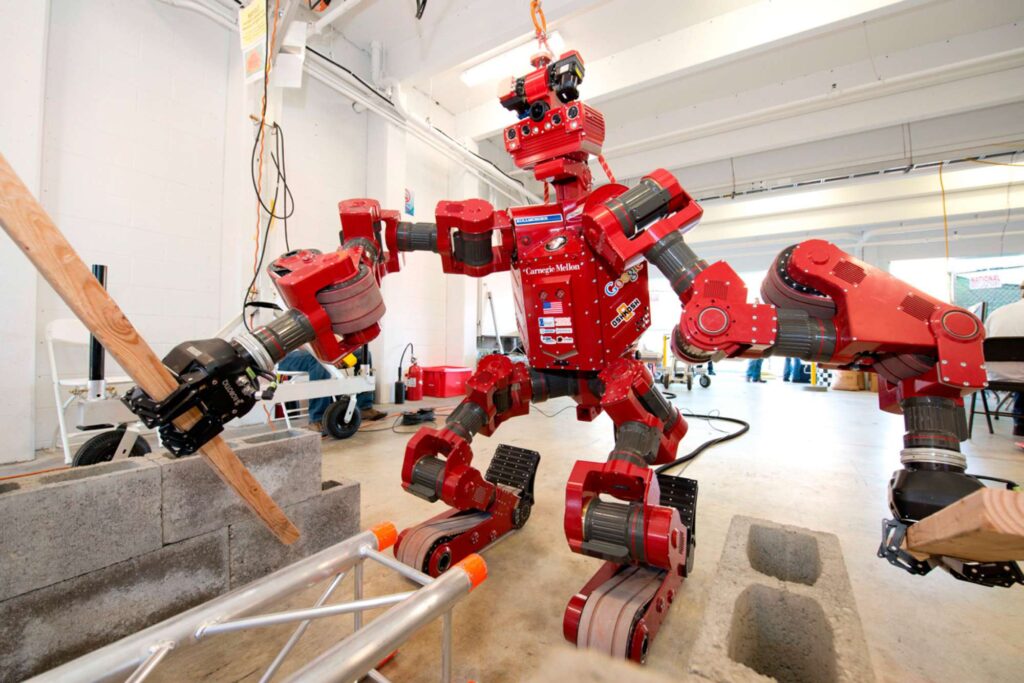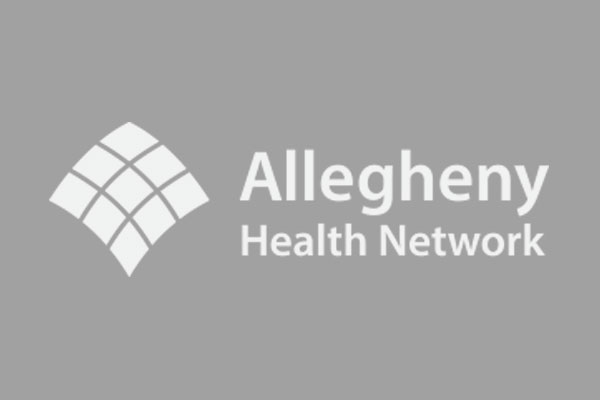
Pittsburgh’s leading industries and unrelenting spirit of innovation will drive the region forward, coming back stronger post-pandemic.
You would be hard pressed to find any American city that has not faced setbacks, delays, and shortages brought on by the ongoing COVID-19 pandemic. Pittsburgh is no exception—unemployment skyrocketed to 17 percent in April 2020, businesses large and small struggled, and entire industries contended with shifts in work styles and disruptions to operations.
Yet Pittsburgh is a resilient city, as history has shown. It’s taken decades for Pittsburgh to recast itself as a leading technology, health care, business, and manufacturing hub that produces much more than steel. Today, that transformation continues.
Pre-pandemic, Pittsburgh’s success and zest for innovation fostered a new renaissance. Post-pandemic, this same momentum continues to reforge Pittsburgh’s fire, advancing the region’s life sciences, manufacturing, and technology sectors, among others. To be clear, Pittsburgh, and the world more broadly, has not yet safely put the pandemic into the past; concerns about viral variants, public health, and more remain. But the region’s spark for innovation and development across its leading business sectors will bolster post-pandemic Pittsburgh, not only preparing the region for what lies ahead but paving the way for coming back stronger.

Investing in Pittsburgh
Pittsburgh is a hot investment. The region’s investment record reveals that, in the past 10 years, nearly 600 unique Pittsburgh companies amassed more than $7.2 billion in total investments, according to a report issued by Ernest & Young and Innovation Works, groups that work closely with emerging companies. Even with the pandemic dragging down economic activity and start-up momentum, 171 Pittsburgh tech companies raised $993 million in investments in 2020—the Pittsburgh region’s second-best year in total investments within the past decade.
While the pandemic has hindered economic activity and disrupted in-person networking opportunities that fuel start-up innovation, widespread transition to virtual events and meet-ups has been more than just a saving grace for investment and start-up activity in Pittsburgh. “I think the pandemic has actually helped accelerate the number of investments in Pittsburgh start-ups from outside the region,” says Lynsie Campbell, director of business investment at the Pittsburgh Regional Alliance (PRA), the economic development affiliate of the Allegheny Conference on Community Development, representing the 10-county Pittsburgh region.
Pre-pandemic, many investors and venture capitalists expected to meet with founders and entrepreneurs face-to-face before investing in their companies and ideas. From a founder’s perspective, coordinating travel and in-person visits wasn’t always easy or practical.
Now, it’s not uncommon for investors to make an investment in a Pittsburgh company after only attending some Zoom calls and virtual meetings. “I talked to a founder who is getting ready to close a $6 million seed round. All of the money is from Chicago, and he never had to leave his apartment during the process. You didn’t see that before the pandemic,” Campbell says. It’s likely that virtual and hybrid meetups will be a lasting fixture among investors and the business community more broadly, Campbell says, which could lead to more deals and investments all around.
Pittsburgh’s businesses also have somewhat of a silver lining to look for in terms of the pandemic’s otherwise disruptive effects. The pandemic has shown that, for some workers, it’s possible to work remotely from anywhere and still perform at a high capacity. This means that companies can be more flexible in terms of where they choose to set up offices and locations and where workers live.

While larger cities have lost workers and certain populations due to pandemic exodus, Pittsburgh provides a perfect place to scale a company and a more-than-suitable home for new talent. “I’m a believer that COVID will position us better long term,” says Mark Thomas, PRA president.
But if talent is coming to Pittsburgh and if companies are growing here, there’s work yet to be done to maximize on this potential, Thomas says. Going forward, the region will still need to bolster availability of early-stage capital for founders and companies and further support the ecosystem for start-ups and younger companies. “This is a moment now for us to do what the cities that have been very dominant in the last decades have done, which is to build out full support at a larger scale to be able to accommodate more growth,” Thomas says.
Pittsburgh’s variety of business sectors and even its extent and range of amenities also mean that many types of workers and professionals can find a seat at the table, so to speak. “There are obviously strategic investments we want to see happen based on where growth is anticipated,” Thomas says. “But if you’re a fashion designer, if you’re a tech entrepreneur, if you’re a manufacturer, there is a place and a seat for you here.”
Compared to founders in cities like Boston and San Francisco, Pittsburgh’s start-up community may not yet have access to the same levels of local capital and financial resources. But that’s made founders in the region only more resilient. And what of pandemic setbacks and ongoing challenges? “[The pandemic] has been a reminder to me that the founders and entrepreneurs in Pittsburgh are gritty, determined, and filled with perseverance,” Campbell says. “They’ve found ways to adapt and be successful in this climate regardless of the hurdles placed in front of them. And I think we’re going to continue to see that moving forward.”
Pittsburgh: Where Technology Thrives
The pandemic has affected nearly every economic sector and business division in southwestern Pennsylvania, if not the country and the world more broadly. But Pittsburgh’s momentum hasn’t come screeching to a halt. The region’s continued rebranding as a leading technology and innovation hub remains in effect. In more ways than one, tech sector achievements and momentum are propelling the region to new heights in spite of lingering pandemic obstacles. “Pittsburgh a few years ago might not have been on the list of cities that you would think of when it comes to tech. I don’t think that that’s the case anymore,” says Allegheny County Executive Rich Fitzgerald. “You’re just seeing an explosion of life sciences, robotics, AI, IT, etc. You’re going to see more and more of this as time goes on.”
Tech sector growth, among other factors, has even contributed to the newly realized reversal in Allegheny County’s population figures, Fitzgerald says. For the first time in 60 years, 2020 census information revealed that Allegheny County’s population has increased in recent years. What’s more, the population is becoming more diverse, and, Fitzgerald says, the increase seen in the 25- to 34-year-old population ties directly to tech sector jobs. “That was in large part driven by tech and the tech jobs that are coming here and growing here,” Fitzgerald says.

The cultural amenities, quality of life, and low cost of living throughout Pittsburgh and southwestern Pennsylvania have made the region a prime place to call home. “We have all of the quality of life that those cities that we’re competing with have,” Fitzgerald says. “Our competitive advantage is huge when it comes to cost.”
For Pittsburgh’s tech sector, coupling low cost of living with high quality of life has driven the region’s ability to attract and retain the talent needed to keep the sector moving forward. “When the Googles and the Apples and the Amazons and the Argo AIs and Duolingos need to attract talented individuals and they need to get people to move to a city, putting all of those things together gives us a huge advantage over some of those cities that are, quite frankly, pricing themselves out of the marketplace,” Fitzgerald says. “If you move to Pittsburgh from some other place, know that there are many options for you as a tech worker. You don’t just have the one place to work.”

Yet even with a burgeoning tech sector, challenges persist. Fitzgerald says that equity is of top concern. The workforce and employees of all different backgrounds must be equipped with the skills needed to perform tech-related jobs. Otherwise, not everyone can partake in the employment opportunities stemming from the tech sector’s prosperity.
Further, Fitzgerald says that workers must be able to access and easily travel to the locations where these jobs abound, such as Pittsburgh’s Robotics Row, a hotbed of robotics, AI, and technology companies situated along the Allegheny River in the Strip District and Lower Lawrenceville neighborhoods. This means that infrastructure, public transportation options, and other commuting factors must be continually assessed and refined.
Pittsburgh Is a Place to Make Things
Pittsburgh is ever the place for people and companies to manufacture and build things. Manufacturing never left Pittsburgh; instead it evolved, advanced, and took on much more modern forms. Today, there is much more than steel being made in Western Pennsylvania. The region continues to lead in advanced manufacturing, with the development and manufacturing of polymers, additive components, green materials, nuclear parts, medical devices, and even packaged foods.
The Pittsburgh manufacturing sector’s relationship with the tech sector is symbiotic. Here, we have the research and development capabilities to design advanced materials and devices, and we have the manufacturing acumen to bring such technologies to life.
Despite pandemic disruptions, the region’s momentum in additive manufacturing remains vigorous. Additive manufacturing involves the precise 3D printing of various parts and components for use in a variety of engineering, industrial, and manufacturing capacities. Printing parts on demand enables more exacting production and can also speed up production while keeping costs low.
In southwestern Pennsylvania, leading companies like aluminum producer Alcoa make 3D printed components for commercial aircraft. ExOne, a global leader in industrial 3D printing, creates parts on demand for manufacturers, universities, and researchers.
Pittsburgh’s recently announced Neighborhood 91 initiative aims to be a hub for additive manufacturing, bringing all the components of the 3D printing supply chain together in one place. The center will include on-site production of the gases and powders that act as the building blocks of 3D-printed materials. With easy access to shared structural resources, various additive manufacturing companies can produce the sorts of materials and components used for an ever-growing list of applications.
Neighborhood 91 is under construction at the Pittsburgh International Airport’s (PIT) 195-acre Pittsburgh Airport Innovation Campus. The center could eventually support some 1,000 jobs and cement Pittsburgh as a global headquarters for additive manufacturing innovation and production.
And why the airport location? Among many reasons, natural gas originating directly from PIT’s land can provide cheap and efficient energy for the site. Further, completed 3D-printed parts can be flown right from the runway to reach worldwide destinations within 24 hours.

Pittsburgh Is a Life Sciences Leader
When the COVID-19 pandemic set in, the life sciences industry worldwide took center stage as the world closely watched the development of vaccines and other therapies targeting COVID-19. As a result, the workings of complex biological components like RNA-based vaccines and antibodies have become more familiar to concerned citizens and people everywhere.
The pandemic has provided a clear example of the need for a robust and responsive life sciences industry and of how researchers and clinical teams around the world can effectively collaborate to combat such widespread threats to health. Given Pittsburgh’s network of leading hospitals and health care providers like UPMC and Allegheny Health Network (AHN) and its research-centric universities and institutions, few places in the world have the capabilities to carry out the breadth of life sciences research as Pittsburgh.
Now, Pittsburgh is making even more significant gains in its life sciences infrastructure. In 2021, the University of Pittsburgh announced plans to build a highly specialized biomanufacturing facility at Hazelwood Green, a former mill site in Pittsburgh’s Hazelwood neighborhood. Known as Pitt BioForge, the planned 200,000- to 250,000-square-foot facility will become a biomanufacturing headquarters, building on the cutting-edge biomedical research conducted in Pittsburgh.
Funding for Pitt BioForge comes from a $100 million grant from the Richard King Mellon Foundation, marking the storied Pittsburgh nonprofit’s largest single-project investment in its 74-year history.
The project aims to bring a new type of commercial manufacturing to Pittsburgh. Instead of producing steel or 3D printed pieces, the facility will manufacture the key components needed for developing and delivering cellular and genetic therapies to fight disease. So, the production of biological entities like various cells, viral vectors that deliver genetic material, antibodies, and other agents on significant scales will transform the region’s ability to develop, test, and deliver new therapies.
“Manufacturing matters. It matters to communities. It matters to people who do the jobs. And it matters to the people who are going to be using those products. I think we in Pittsburgh have a better appreciation for that than probably most other places in the country,” says Sam Reiman, director of the Richard King Mellon Foundation. This time, instead of building and transporting steel, Pittsburgh will be making biologics, but, says Reiman, “it’s a different version of the same story.”
When researchers need such specialized components and ingredients for research, contracting and connecting with biomedical manufacturers can take time and result in supply chain issues. Pitt BioForge will bring production much closer to home.
While the capacity to manufacture key biological tools will be of broad use to Pittsburgh’s growing roster of life sciences start-ups, the development aims to increase economic opportunities for residents throughout Hazelwood as well.
Further, by being able to develop new therapies and then produce them right in Pittsburgh, patients in the region can more readily access the most cutting-edge treatments. Bringing production right to Pittsburgh will also enhance translational research, or the process of transforming and implementing lab-based developments into patient-ready clinical therapies.
“Most cities or even big established companies don’t have [a biomanufacturing facility]. Certainly, [Pitt BioForge] will allow Pittsburgh to come back stronger and also to grow biotech companies that are spinning out of the universities here and for them to stay here and grow here in a way that they couldn’t before,” Reiman says.
Healing Pittsburgh, Healing the World
Pittsburgh hospitals and health care networks play an outsized role in life sciences innovation and in driving new technologies and techniques to improve patient care. The COVID-19 pandemic has tested hospital staff and health care workers everywhere in new ways, putting unprecedented strain on systems while demanding innovation and resiliency.
Yet Pittsburgh’s hospitals and health care workers across fields and specialties proved up to the task, delivering excellent care while still managing to advance and implement new technologies and means of care. “Throughout the pandemic, our entire team—nurses, physicians, technicians, therapists, social workers, environmental services employees, dietary services, security, engineering, everyone—stepped up to face a public health emergency that was unprecedented in our lifetimes,” says Dr. Donald Whiting, Allegheny Health Network (AHN) chief medical officer. “The COVID pandemic has posed significant challenges to hospital operations over the past 18 months, but one thing it hasn’t done is slow AHN’s investment in new facilities, programs, and technologies.”
The pandemic has prompted technological advances such as the rapid adoption of virtual medicine and patient video visits with primary care providers and specialists, Whiting says. In spite of the pandemic’s added challenges, since the pandemic’s inception, AHN has opened five new hospitals, including the 160-bed Wexford Hospital, and launched the $90 million AHN Cancer Institute research hub at Allegheny General Hospital (AGH).
In terms of technological innovations, in 2021 AHN opened a new genomics lab at AGH to develop advanced biological agents to treat cancer and other diseases. It also implemented a new technology combining MRI and linear accelerator radiotherapy in one interactive machine that can more safely and accurately eradicate malignant tumors.

All in all, Whiting says that AHN and Highmark Health have invested more than $1.5 billion in new health care facilities, programs, and technologies over the last five years, with new investments on the way.
At UPMC, the region’s largest health care provider has leveraged its capabilities to conduct leading-edge clinical and biomedical research to improve our understanding of and therapies for COVID-19 Throughout the pandemic. UPMC researchers have studied the use of monoclonal antibody injections to treat COVID-19, partnered with international research teams to evaluate the use of convalescent plasma in COVID-19 patients, and participated in a federal study on pregnant and postpartum individuals’ immune responses to COVID vaccines.
These examples are but a sampling of the COVID-related research efforts that UPMC has led or participated in throughout the pandemic. In terms of patient-care, UPMC has provided more monoclonal antibody infusions—which boosts the body’s immune defenses to help prevent COVID patients from becoming sicker—than any other health care system in Pennsylvania. UPMC has also distributed more than 700,000 COVID-19 vaccine doses as of late 2021.
The achievements of Pittsburgh’s life sciences industry and health care sector have been especially visible throughout the pandemic. But just as coordination and teamwork have been vital to new treatment breakthroughs and capabilities, Pittsburgh’s leading business sectors and economic resources must come together to stage our region’s comeback.
Pittsburgh’s momentum has been building for years. And while the COVID-19 pandemic continues to change shape and present new obstacles, Pittsburgh’s penchant for innovation, diverse business sectors, and characteristic resiliency ensure a way forward. If history is any measure, Pittsburgh will come back only stronger, taking bold steps and leading by example along the way. mg









